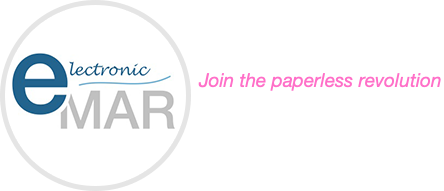Did you know that signing off a medication dose in the eMAR system is one of the most important steps a nurse can take to protect a patient? This task may seem routine, but it plays a major role in keeping patients safe, preventing errors, and supporting strong communication across care teams.
With the move from paper charts to the Electronic Medication Administration Records (eMAR) system, nurses now use digital tools to manage medication records. These systems offer faster access, better accuracy, and alerts that help prevent mistakes. But the system only works well when nurses follow best practices.
In care homes and clinical settings, each sign-off shows not only what was given, but also how carefully the nurse followed safety steps. Here, we share some of the key practices every nurse should follow to make sure that the eMAR system supports safe, effective, and high-quality care.
1. Check Patient Details with Care
Before giving or signing off any medication, nurses must confirm the patient’s identity. This often involves checking two unique identifiers—such as the patient’s full name and date of birth, or their unique ID number. In busy environments, this step helps prevent giving the wrong medicine to the wrong person.
Nurses should then match the medication on the eMAR with the doctor’s prescription. They must confirm the correct medicine name, strength, dose, route (such as oral, injection, or topical), and scheduled time. If the system gives an alert about an allergy or possible interaction, the nurse must not ignore it. If something doesn’t match or looks unclear, the nurse should stop and ask for help before continuing.
2. Record the Medication Promptly and Clearly
After giving the medication, nurses should enter the exact time and dose into the eMAR without delay. Quick and accurate recording helps the next shift avoid errors and ensures a full record of care.
If a patient refuses a dose, or if the dose cannot be given for another reason, this must appear in the eMAR with a brief but clear note. Nurses should also document any side effects or reactions the patient experiences. This should include what happened and when it occurred.
When withholding a dose due to medical advice or patient condition, the nurse must write the reason. These notes help doctors and other staff understand the full picture and respond quickly when needed.
3. Use the Notes Section to Improve Care
The eMAR system includes a notes or comments section, which gives nurses a chance to share valuable information. For example, if a patient struggles to swallow tablets, or shows signs of confusion or distress, these observations should be written clearly.
Nurses should also record any conversations with doctors, pharmacists, or colleagues about medication. Whether it involves a dose change, a side effect, or a question, these notes improve teamwork and make sure everyone stays informed.
4. Keep Patient Information Safe
Patient confidentiality remains a legal and professional duty. After using the eMAR system, nurses must log out or lock the screen to stop anyone else from seeing the data. They should only use approved devices and never share login details.
If the nurse sees an error, a system fault, or any issue that could affect data accuracy, it should be reported straight away. Good data protects patients and supports legal and clinical standards.
eMAR systems change and improve over time. Nurses should take part in training sessions to stay confident in using new features. Refresher courses, team meetings, and shared experiences all help build a stronger and safer care environment. Nurses must also stay aware of any updates to local policies, clinical rules, or national regulations. This helps them keep their practice safe, legal, and up to date.







